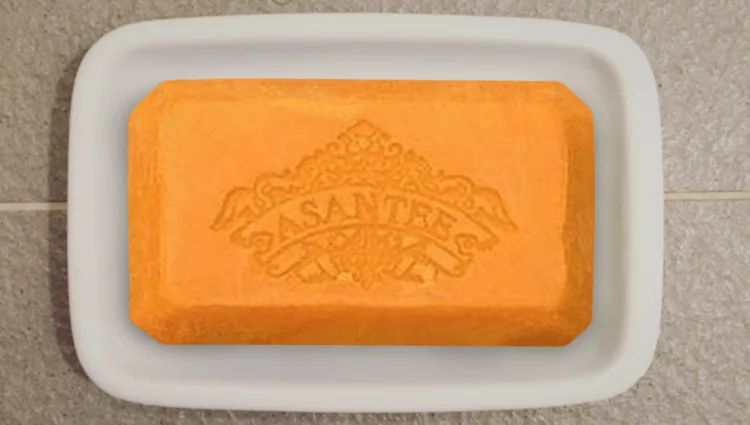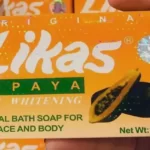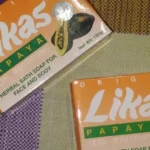Now Reading: How to Spot a Fake Asantee Papaya Soap? 12 Signs To Look Out For
-
01
How to Spot a Fake Asantee Papaya Soap? 12 Signs To Look Out For
How to Spot a Fake Asantee Papaya Soap? 12 Signs To Look Out For

This post may contain affiliate links. Please read our full disclosure here.
Asantee Papaya & Honey Soap has gained popularity for its promise of brighter, smoother skin, enriched with papaya extract, honey, vitamins, and natural exfoliants. However, as with many sought-after skincare products, it has become a frequent target for counterfeiters. Identifying a fake version can be tricky, especially as counterfeit products continue to evolve and mimic real ones more closely. Here’s a comprehensive guide to help you determine whether your Asantee Papaya Soap is the real deal or a convincing imitation.
1. Packaging Discrepancies
The outer packaging of Asantee soap can reveal a lot:
- Batch Numbers and Logos: Genuine soaps often display a batch number in a specific format like “LOT: [number]” and may include a faint brand logo nearby. Some users even describe an embossed-like quality or logo intertwined with the batch number. Fake versions might lack this or show poor printing quality.
- Print and Color Quality: Look closely at the text and images. Authentic boxes usually have sharp printing and vibrant colors. Fake ones often have blurry text, misspellings, and off-color tones. The cardboard of fake boxes may also feel flimsier.
- Barcode: While scanning the barcode can sometimes lead to the official website, it’s not foolproof. Counterfeiters may clone barcodes. However, the absence of a barcode or one that looks suspicious is a warning sign.
- Inner Wrapping: Authentic soap is typically neatly wrapped in plastic or paper, depending on the batch. A loose or poorly sealed wrap could indicate a counterfeit product.
- Consistency of Information: Double-check for correct and consistent details like manufacturer name, origin, and ingredients. Errors or inconsistencies are often a red flag.
2. Scent Differences
The fragrance of the soap can be telling:
- The original soap has a mild to moderate sweet, fruity scent with honey notes.
- Fake versions might smell overly chemical, unusually strong, too weak, or have an off-putting artificial fragrance.
- Some users note that fake soaps may lose their scent very quickly after unwrapping.
3. Soap Bar Texture and Appearance
Examining the soap itself can provide clues:
- Color: Real Asantee Papaya Soap has a consistent yellowish-orange hue. Fakes may appear too light, too dark, unnaturally bright, or show uneven coloration.
- Finish and Embossing: The bar should have a smooth, well-molded finish with clear embossing of the brand name. Counterfeits may feel rough or show unclear, shallow embossing.

4. Lather and Usage Experience
Performance during use might expose a fake:
- Authentic soap produces a rich, creamy lather and feels smooth on the skin.
- Fakes may create poor or gritty lather and may feel different while being used.
- Some users report that fake soaps don’t lather well in hard water areas. Using a loofah or washcloth may help in such cases.
5. Price Too Good to Be True
While affordable, real Asantee soap isn’t dirt cheap:
- If a seller is offering it at a significantly lower price than others (e.g., far below the typical $7 range), it may be a red flag.
- Counterfeit products are often sold at deep discounts to attract buyers.
6. Unusual Skin Reactions
Pay attention to how your skin reacts:
- The genuine soap is generally considered mild and may help brighten skin and reduce blemishes, acne, and hyperpigmentation.
- Fake versions have been reported to cause dryness, itchiness, or even breakouts, possibly due to substandard or harsh ingredients.
- Some users with dry skin find that even authentic soap can feel drying, possibly due to papaya enzymes. Following up with a moisturizer is advised.
7. Missing or Incorrect Manufacturer Information
Check the manufacturer details on the packaging:
- Genuine soaps are made in Thailand by “A.S.P. International Herbal Soap Co., Ltd.”
- If the product lacks this information, has spelling errors, or includes conflicting details, it may not be authentic.

8. Ingredient List Accuracy
Read the ingredients label carefully:
- Real Asantee Papaya Soap typically includes papaya extract, honey, glycerin, vitamins C & E, coconut palm oil, Q10, and AHA collagen.
- These ingredients contribute to cleansing, moisturizing, and brightening effects.
- Fakes might list odd or unfamiliar ingredients, omit key ones, or have poorly printed text.
9. Feedback and User Reviews
Online communities can be a helpful resource:
- Check platforms like YouTube, TikTok, and skincare forums for recent reviews.
- Look out for complaints about scent, lather, packaging issues, or lack of visible results.
- Some reviewers share comparison videos between original and fake versions.
10. Seller Reputation
Where you buy the soap matters:
- Prioritize reputable platforms and verified sellers.
- Avoid unknown sellers on social media or informal marketplaces, especially if they have limited history or negative reviews.
- Authorized distributors and specialty beauty stores are more reliable.
11. Evolving Counterfeits
Be aware that fake versions are constantly changing:
- Even if you’ve spotted a fake before, a newer version may look more convincing.
- Counterfeiters are known to alter packaging and improve imitation techniques.
- Stay updated by checking current buyer warnings, unboxing videos, and photo comparisons.
12. Lack of Expected Results
Finally, observe the results over time:
- Genuine soap is known to help reduce acne, lighten dark spots, and even out skin tone with consistent use.
- If your skin doesn’t feel cleaner or appear brighter after several weeks, or if results are drastically different from your past experiences with Asantee, the soap might be a fake.
Final Thoughts
Spotting a fake Asantee Papaya Soap isn’t always easy, but by staying alert and looking out for these 12 indicators, you can greatly reduce your chances of being misled. While some differences might be subtle, a combination of clues—especially regarding packaging, scent, performance, and source—can help guide your judgment.
Spotting a fake Asantee Papaya Soap isn’t always easy, but by staying alert and looking out for these 12 indicators, you can greatly reduce your chances of being misled. While some differences might be subtle, a combination of clues—especially regarding packaging, scent, performance, and source—can help guide your judgment.
Asantee is a well-regarded Thai brand focused on herbal skincare, and their papaya soap is particularly known for gentle exfoliation, brightening effects, and moisturizing benefits. But it’s important to remember that even authentic products are not miracle solutions. They may work better for some than others, and consistent, long-term use often yields the best results.
Always check the full ingredient list before purchasing, especially if you have sensitive skin or allergies. Stick with trusted sellers, compare packaging closely, and listen to your instincts. Your skin will thank you.










